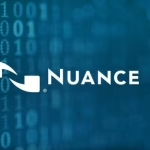Unpacking Microsoft AI Ambition: The Strategic Integration of Nuance
Microsoft journey into artificial intelligence has been a long and evolving one, marked by significant investments in research, development, and strategic acquisitions. Among these, the acquisition of Nuance Communications stands out as a pivotal move, signaling a deeper commitment to specialized AI applications, particularly in healthcare and customer engagement. This integration goes beyond mere technology consolidation; it represents a nuanced approach to AI that aims to embed intelligence seamlessly into everyday workflows. This article delves into the strategic thinking behind Microsoft AI push and how Nuance is becoming an indispensable part of that vision.
Microsoft Broad AI Vision: AI for Everyone
Microsoft overarching AI strategy is to democratize AI, making it accessible and beneficial for individuals, businesses, and developers. This vision is built on several pillars:
- Azure AI: A comprehensive suite of cloud-based AI services for developers.
- Microsoft 365 Copilot: AI-powered assistants integrated into productivity tools.
- Industry-Specific AI: Tailoring AI solutions for vertical markets like healthcare, finance, and retail.
The integration of Nuance is a clear acceleration of the third pillar, bringing specialized domain expertise into Microsoft broader AI ecosystem.
The Nuance Advantage: Deep Domain Expertise
Nuance Communications has long been a leader in conversational AI and ambient intelligence, particularly in highly regulated and complex industries like healthcare. Their expertise lies in understanding the subtle complexities of human language and translating it into actionable data. This “nuance” in their technology is precisely what Microsoft sought.
Key Nuance Technologies and Their Value:
- Dragon Ambient eXperience (DAX): An AI-powered ambient clinical intelligence solution that automatically documents patient encounters.
- Dragon Medical One: A leading speech recognition solution for clinicians.
- Nuance Mix: A platform for building custom voice and chatbot solutions.
- Nuance Gatekeeper: Voice biometrics for fraud prevention and authentication.
These specialized capabilities fill critical gaps in Microsoft existing AI portfolio, especially where accuracy, compliance, and domain-specific understanding are paramount.
Integration Points: Where Nuance Meets Microsoft
The synergy between Nuance and Microsoft is evident across several key integration points:
1. Healthcare Transformation
This is the most prominent area of integration. Nuance’s clinical AI solutions are being deeply embedded into the Microsoft Cloud for Healthcare. This aims to:
- Reduce physician burnout by automating clinical documentation.
- Improve patient experience through intelligent virtual assistants.
- Enhance clinical decision-making with AI-powered insights.
For example, Nuance DAX is designed to integrate with electronic health records (EHRs) and Microsoft Teams, allowing doctors to focus on patients while AI handles the administrative burden. This is a prime example of Nuance in Healthcare.
2. Customer Engagement and Contact Centers
Nuance’s conversational AI technologies are enhancing Microsoft Dynamics 365 Customer Service. This means:
- More intelligent virtual agents for customer support.
- Improved agent assist tools for human agents.
- Enhanced voice biometrics for secure and seamless customer authentication.
The goal is to create more personalized and efficient customer interactions, reducing wait times and improving satisfaction. This aligns with the broader theme of Nuance in Customer Service.
3. Enterprise Productivity and Accessibility
Nuance’s speech recognition capabilities, particularly from its Dragon line, are finding their way into Microsoft productivity suite. This includes:
- Enhanced dictation features in Microsoft 365 applications.
- Improved accessibility tools for users with disabilities.
- Potential for voice-enabled commands and workflows across Microsoft Teams and other platforms.
This integration aims to boost productivity for all users, making technology more intuitive and accessible.
The Future of Microsoft AI with Nuance
The acquisition of Nuance is not just about current products; it’s about accelerating Microsoft long-term AI strategy. The future could see:
- Ambient Intelligence Everywhere: AI that seamlessly blends into our environments, anticipating needs and providing assistance without explicit commands.
- Hyper-Personalization: More tailored experiences in healthcare, finance, and other sectors based on deep understanding of individual needs.
- Ethical AI Development: Both companies have a strong commitment to responsible AI, focusing on privacy, fairness, and transparency. This is a critical aspect of Microsoft AI principles.
The combined power of Microsoft cloud infrastructure and Nuance’s specialized AI expertise creates a formidable force in the AI landscape. It signifies a shift towards more human-centric AI, where technology understands and responds to our needs with greater subtlety and precision.
Conclusion: A Nuanced Approach to AI Integration
Microsoft acquisition of Nuance is a testament to the growing importance of specialized, domain-specific AI. By integrating Nuance’s deep expertise in conversational and ambient intelligence, Microsoft is not just expanding its AI portfolio; it’s refining its approach to deliver more impactful and human-centric solutions. This partnership is set to redefine how we interact with technology, making AI a more seamless, intelligent, and nuanced part of our daily lives, particularly in critical sectors like healthcare. The future of AI is not just about raw power, but about the subtle intelligence that truly understands and assists.


